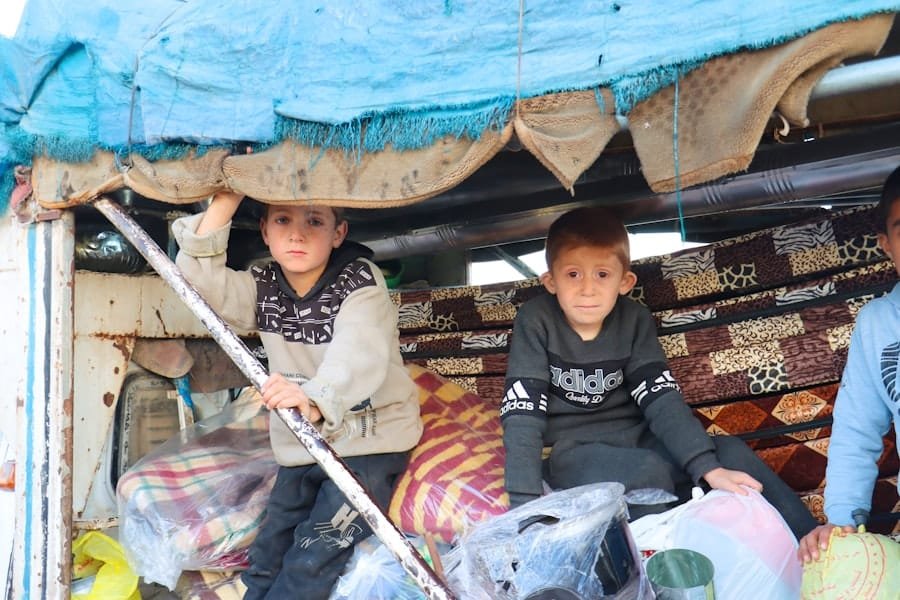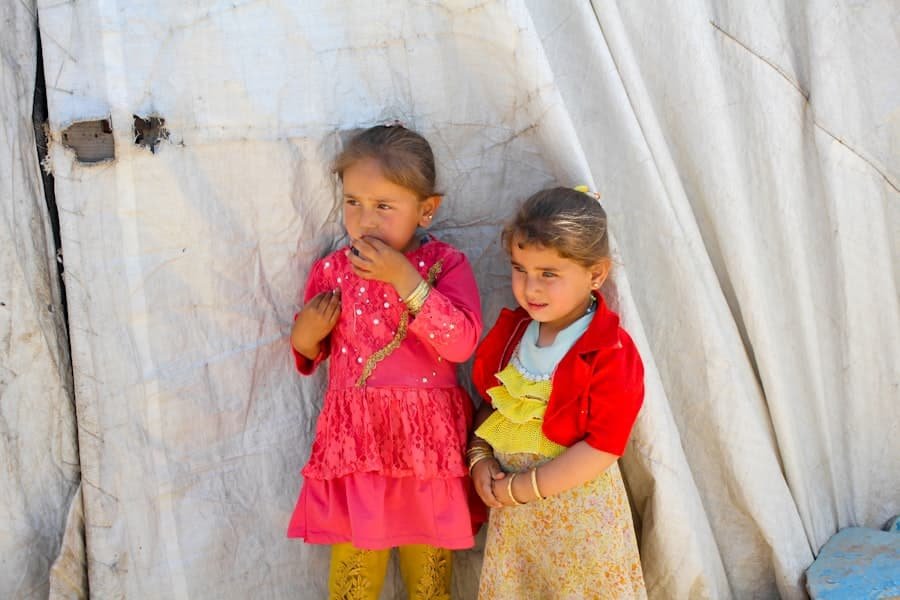Refugee and asylum law is a critical component of international and domestic legal frameworks, designed to safeguard individuals forced to flee their home countries due to persecution, conflict, or violence. This area of law is founded on the principle of providing protection to those at risk of serious harm in their countries of origin. It is grounded in fundamental human rights principles, including non-discrimination, equality, and the right to seek and enjoy asylum from persecution.
The field of refugee and asylum law is multifaceted and dynamic, encompassing a diverse array of legal instruments such as international treaties, national legislation, and judicial decisions. This legal framework aims to ensure that individuals fleeing persecution or violence can access protection and support in other countries. It addresses both the rights and responsibilities of refugees and host countries, as well as the procedures for determining refugee status and granting asylum to those in need.
Refugee and asylum law plays a vital role in upholding human rights principles and fostering international solidarity. Simultaneously, it addresses the practical challenges associated with managing large-scale refugee movements. As global circumstances continue to evolve, this area of law adapts to meet the changing needs of displaced populations and the countries that provide them sanctuary.
Key Takeaways
- Refugee and asylum law is a complex legal framework that governs the rights and protections of individuals fleeing persecution and seeking refuge in another country.
- A refugee is someone who has been forced to flee their country due to persecution, war, or violence, while an asylum seeker is someone who has applied for protection as a refugee and is awaiting a decision on their application.
- The international legal framework for refugees is primarily governed by the 1951 Refugee Convention and its 1967 Protocol, while national laws and policies vary from country to country.
- The process for seeking asylum typically involves submitting an application, undergoing an interview and assessment, and potentially appealing a decision if the application is denied.
- Refugees and asylum seekers have rights and protections under international and national law, including the right to seek asylum, protection from refoulement, and access to basic services and support.
Definition of Refugee and Asylum Seeker
Defining a Refugee
A refugee is defined under international law as a person who has fled their home country due to a well-founded fear of persecution based on race, religion, nationality, political opinion, or membership in a particular social group. This definition is outlined in the 1951 Refugee Convention and its 1967 Protocol, which form the cornerstone of international refugee law. In addition to this definition, many countries have their own domestic laws that provide further guidance on who qualifies as a refugee within their borders.
Asylum Seekers: A Vulnerable Group
An asylum seeker is an individual who has applied for protection in another country and is awaiting a decision on their refugee status. Asylum seekers are often in a vulnerable position, as they have left their home countries in search of safety and are seeking recognition as refugees under international or national law.
The Challenges of Seeking Asylum
The process of seeking asylum can be complex and challenging, as individuals must navigate legal procedures, provide evidence of their need for protection, and often face significant barriers to accessing support and services.
International and National Legal Framework

The legal framework for refugees and asylum seekers is based on a combination of international treaties, national laws, and court decisions. At the international level, the 1951 Refugee Convention and its 1967 Protocol set out the rights and obligations of states in relation to refugees, including the principle of non-refoulement, which prohibits the return of refugees to countries where they would face persecution. These instruments also establish the criteria for determining refugee status and outline the rights of refugees to access education, work, and other essential services.
In addition to international law, many countries have their own domestic laws that govern the treatment of refugees and asylum seekers within their borders. These laws may provide further guidance on the process for seeking asylum, the rights and responsibilities of refugees, and the obligations of the state to provide protection and support. National legal frameworks for refugees and asylum seekers can vary widely from country to country, reflecting different political, social, and economic contexts.
Process for Seeking Asylum
The process for seeking asylum can be complex and challenging, requiring individuals to navigate legal procedures, provide evidence of their need for protection, and often face significant barriers to accessing support and services. In many countries, asylum seekers must submit an application for refugee status to the government or a designated immigration authority. This application typically requires individuals to provide detailed information about their reasons for seeking asylum, including evidence of persecution or violence in their home countries.
Once an application for asylum has been submitted, individuals may be required to attend interviews or hearings to present their case for refugee status. This process can be daunting for many asylum seekers, who may have experienced trauma or persecution in their home countries and may struggle to communicate effectively with authorities. In some cases, asylum seekers may also face challenges in accessing legal representation or support services, which can further complicate the process of seeking asylum.
Rights and Protections for Refugees and Asylum Seekers
Refugees and asylum seekers are entitled to a range of rights and protections under international and national law. These rights include the right to seek asylum from persecution, the right to non-refoulement (protection from being returned to a country where they would face persecution), the right to access education, work, and essential services, and the right to be treated with dignity and respect. In addition to these fundamental rights, refugees and asylum seekers are also entitled to legal representation, access to information about their rights and obligations, and support in navigating the asylum process.
Despite these legal protections, refugees and asylum seekers often face significant challenges in accessing their rights in practice. Many refugees live in precarious conditions in refugee camps or informal settlements, where they may struggle to access adequate housing, food, healthcare, and education. Asylum seekers may also face discrimination, xenophobia, or hostility in their host countries, which can further undermine their ability to access protection and support.
In some cases, refugees and asylum seekers may also be at risk of exploitation or abuse by traffickers or criminal networks.
Challenges and Controversies in Refugee and Asylum Law

The Global Refugee Crisis
One of the key challenges facing refugee and asylum law is the increasing number of people who are forced to flee their homes due to conflict, persecution, or violence. The global refugee crisis has put significant strain on countries’ capacity to provide protection and support to those in need, leading to debates about how best to manage large-scale refugee movements.
Rise of Anti-Immigrant Sentiment
Another major challenge facing refugee and asylum law is the rise of anti-immigrant sentiment and xenophobia in many countries. This has led to increased hostility towards refugees and asylum seekers, as well as restrictive immigration policies that make it harder for individuals to access protection.
Discrimination and Violence
In some cases, refugees have been subjected to discriminatory treatment or even violence by host communities or authorities.
Future of Refugee and Asylum Law
The future of refugee and asylum law is likely to be shaped by ongoing debates about how best to respond to the global refugee crisis and provide protection to those in need. One key area of focus is likely to be on strengthening international cooperation and solidarity in addressing refugee movements, including through increased support for countries hosting large numbers of refugees. Efforts to promote greater responsibility-sharing among states are also likely to be a key priority in shaping the future of refugee and asylum law.
Another important aspect of the future of refugee and asylum law is likely to be on addressing the root causes of forced displacement, including conflict, persecution, and human rights abuses. Efforts to promote peace, stability, and respect for human rights in countries experiencing conflict or instability are likely to be crucial in reducing the number of people forced to flee their homes. In addition, efforts to address climate change and its impact on displacement are also likely to be an important focus in shaping the future of refugee and asylum law.
In conclusion, refugee and asylum law is a critical area of international and national legal systems that plays a crucial role in upholding human rights principles and providing protection to those in need. Despite the challenges and controversies facing this area of law, efforts to strengthen legal protections for refugees and asylum seekers are likely to remain a key priority in shaping the future of refugee and asylum law. By promoting greater cooperation among states, addressing the root causes of forced displacement, and upholding the rights of refugees and asylum seekers, it is possible to build a more just and compassionate response to the global refugee crisis.
If you are interested in learning more about the legal implications of asylum and refugee law, you may also want to check out this article on the pitfalls when signing an insurance and how to tackle them. This article provides valuable insights into the legal complexities of insurance contracts and how to navigate them effectively. (source)
FAQs
What is refugee and asylum law?
Refugee and asylum law refers to the legal framework that governs the protection and rights of individuals who have fled their home countries due to fear of persecution, violence, or other forms of harm. It includes international treaties, national laws, and regulations that define who qualifies as a refugee or asylee, and the rights and obligations of both the individuals and the countries that receive them.
What is the difference between a refugee and an asylee?
A refugee is someone who has fled their home country and cannot return due to a well-founded fear of persecution based on race, religion, nationality, political opinion, or membership in a particular social group. An asylee is someone who meets the same criteria but is already present in the country where they are seeking protection.
What are the main international treaties related to refugee and asylum law?
The main international treaties related to refugee and asylum law are the 1951 Refugee Convention and its 1967 Protocol. These treaties define the rights of refugees and the legal obligations of the countries that have ratified them.
What rights do refugees and asylees have?
Refugees and asylees have the right to seek asylum and not to be returned to their home countries where they face persecution. They also have the right to work, access education, and receive social assistance in the country where they have sought protection.
What are the responsibilities of countries towards refugees and asylees?
Countries have the responsibility to provide protection to refugees and asylees, including ensuring their safety, access to basic needs, and the opportunity to rebuild their lives. They also have the responsibility to adhere to international laws and treaties related to refugees and asylees.
